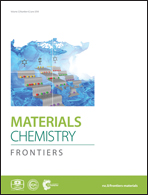Valeriana wallichii root extract as a green & sustainable corrosion inhibitor for mild steel in acidic environments: experimental and theoretical study†
Abstract
Corrosion inhibition analysis and the adsorption behaviour of Valeriana wallichii root extract for mild steel in 0.5 M H2SO4 solution has been investigated utilizing weight loss, electrochemical impendence spectroscopy (EIS), potentiodynamic polarization, SEM, AFM UV-visible spectroscopy, FT-IR, and quantum chemical calculations. Both the electrochemical and weight loss estimations indicated that the root extract of Valeriana wallichii shows excellent inhibition performance of up to 93.47% for mild steel at 500 mg L−1 concentration in 0.5 M H2SO4 solution at 298 K. Naphthoic acid, iridoid and an iridoid analogue are the major phytochemical constituents in the extract of Valeriana wallichii, which possess oxygen atoms (lone pair electrons) and π electrons that facilitate adsorption onto the metal surface. The adsorption of this extract obeys the Langmuir adsorption isotherm. Polarization investigations confirmed that the root extract of Valeriana wallichii acts as a mixed type of inhibitor. The surface studies confirm corrosion retardation in the presence of the extract due to the formation of a protective layer on the surface of mild steel.



 Please wait while we load your content...
Please wait while we load your content...